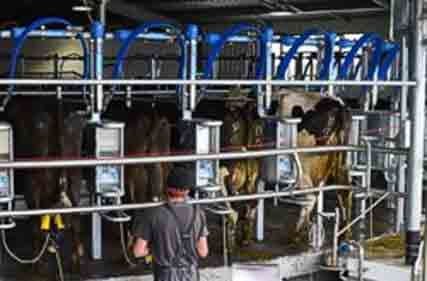
Labour shortages remain a significant constraint, while high beef prices and soaring land values have enticed farmers and farmland away from dairy
According to Dairy Australia’s Situation and Outlook Report, the 2022/23 season is opening with large numbers on both sides of the ledger.
Early announcements of opening milk prices have set new records, backed by stiff competition for milk and robust global markets.
Meanwhile fertiliser, fuel and grain prices are on the up amid the reality of a war in Europe, renewed geopolitical tensions and ongoing disruptions associated with COVID -19.
After successive seasons of recovering profitability, the net effect of these rapid and substantial changes on margins is a key question as farmers and processors try to plan ahead in a volatile market.
Despite some market volatility, data from the 2022 National Dairy Farmer Survey indicated profitability has continued to improve, with 88% of survey respondents reporting an operating profit in 2020/21, and 90% expecting to do so in 2021/22.
The Report also revealed that 82% of Australian dairy farmers are confident about the future of their own businesses (up by 2% on 2021), while 68% of farmers are feeling positive about the future of the industry (up 4%).
Dairy Australia’s Industry Insights and Analysis Manager, John Droppert, says the Report confirms that dairy commodity markets remain strong, driven by a combination of tight supply, robust demand and buoyant soft commodity values.
The Report indicated that ongoing growth limitations and heightened margin risk are expected to offset strong milk prices and favourable seasonal conditions, resulting in a comparatively flat milk pool totalling 8.6 billion litres.
“The 2022/23 season will be marked by rising numbers throughout the supply chain – from production costs to farmgate prices, from commodity values to food expenditure. Meanwhile, labour shortages remain a significant constraint, while high beef prices and soaring land values have enticed farmers and farmland away from dairy,” Droppert said
Domestic consumption volume has shifted from grocery to foodservice as the effects of the pandemic recede and more consumers are out and about. Meanwhile, the value of dairy products sold through supermarkets has increased.
The Report also finds that Australia’s major competitors are experiencing negative or slow growth in milk production, driving up demand and competition.
“This theme is likely to be tempered by an absence of growth in milk production,” Mr Droppert said. “Nonetheless, robust balance sheets after several profitable years might just mean that the volatility accompanying such giddy numbers is something the Australian dairy industry is well-placed to tackle.”
-Dairy NSW
